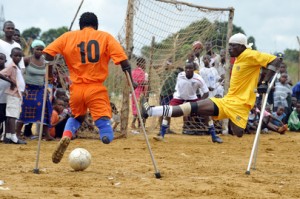In many places, there is considerable stigma and sometimes shame imposed on youth with disabilities (YWDs) and their families by their communities. Feeling embarrassed and ashamed, families often do not acknowledge having a YWD and may limit the interaction of the YWD with the rest of society. The greatest impediments continue to be discrimination, prejudice, and social isolation. Ignorance of disability concerns results in the needs of YWDs being unrealised, leading to a loss of self-esteem, self-worth and the creation of social isolation.
Globally, there are over 650 million persons with disabilities, and around a third of these are youth. Nearly 80% of youth with disabilities live in developing countries, and although the actual figures are uncertain, it is clear that YWDs form a significant proportion of the youth population in every society. Youth with disabilities is a severely under-researched area, with limited data on its prevalence and the effects on youth themselves.
Education is as critical for realizing the full potential of YWDs, as it is for their peers. Yet, more than 98% of children with disabilities in developing countries do not attend school. Educational institutions are often inaccessible and lack appropriate facilities, and teachers frequently have preconceived ideas about what is appropriate for their students with disabilities, often resulting in the exclusion of YWDs from certain activities.
Not receiving the skills and qualifications to function in the wider society, limits the employment opportunities for YWDs. Unemployment rates for persons with disabilities are higher than the non-disabled population in every society and discrimination and negative perceptions of YWDs pose a formidable barrier to YWDs looking for employment.
However, these societal misapprehensions can be addressed. Greater awareness and understanding of disabilities is fundamental to improving this situation. Technological innovations such as the Internet and software adaptations have created opportunities for YWDs, helping to break down barriers and increase their sense of belonging and interaction with their peers.
The World Programme of Action for Youth (WPAY), adopted by the United Nations, in 1995, urges countries to take measures to develop the possibilities of youth with disabilities, paying particular attention to the education of YWDs. To find out more about youth with disabilities, please read the fact sheet.
 Welcome to the United Nations
Welcome to the United Nations
